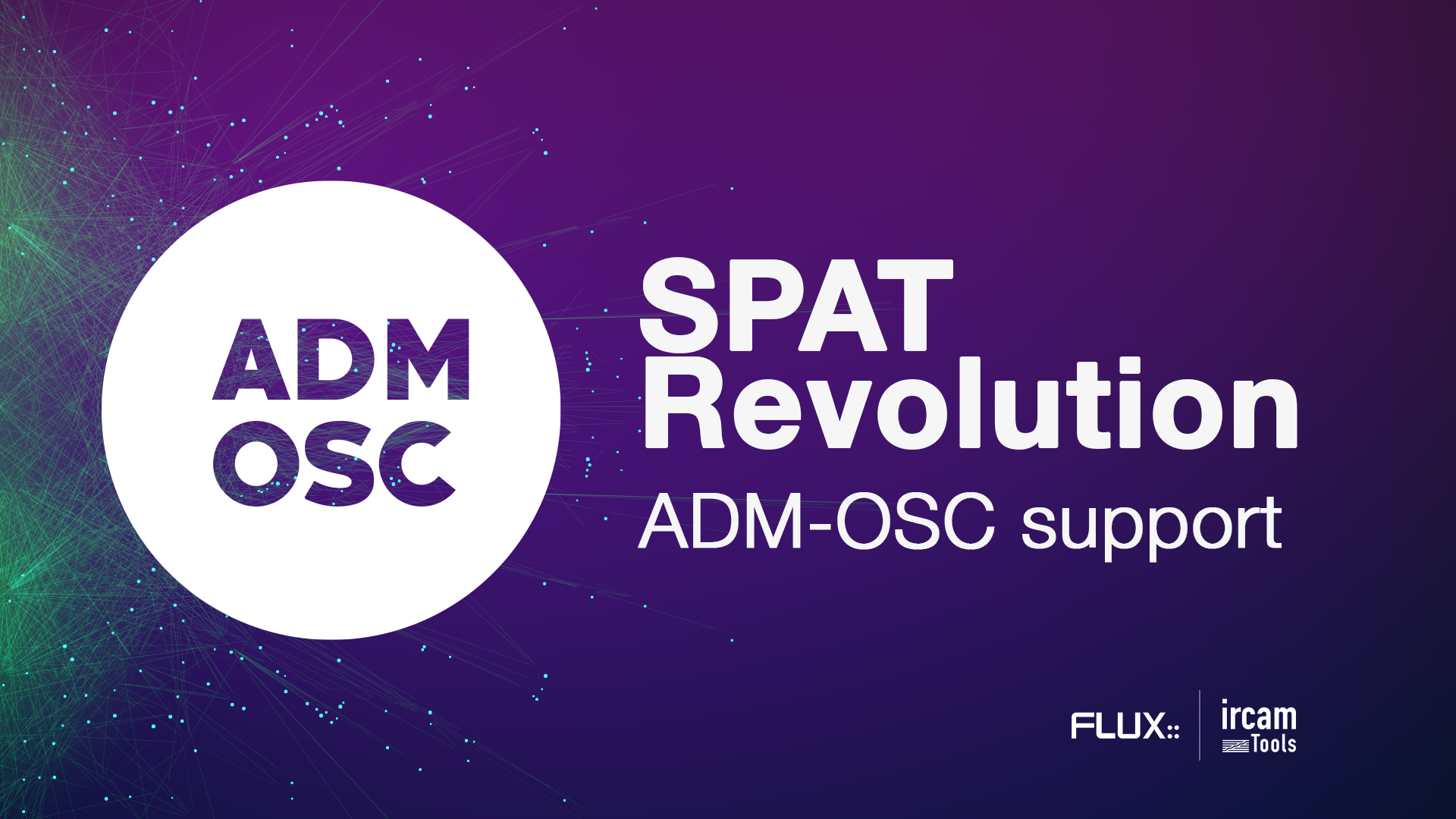ADM-OSC
ADM-OSC is an industry initiative developed by FLUX:: Immersive, L-Acoustics and Radio France (the later leading the case study and specific application) to facilitate the sharing of audio objects metadata between a live ecosystem and a broadcast or studio ecosystem. It tries to define a basic interoperability layer between object editors and object renderers in a live production workflow. It does so with OSC a communication protocol widely used in the live industry. At the base the ADM-OSC is a specific grammar and definition.
Immersive audio is gaining ground in different industries, from music streaming to gaming, live sound to broadcast. ADM or Audio Definition Model, is becoming a popular standard metadata model in some industries, with serial ADM used in broadcast or ADM xml files used in the studio.
A first implementation of ADM-OSC is now included with the latest release of SPAT Revolution. Other industry peers have implemented early versions of ADM-OSC such as L-Acoustics (L-ISA), Merging Technologies (Ovation) and Yamaha Steinberg Media (Nuendo). It is supported by default on OSC input and as an option on OSC output.
More information abd specifications on the ADM-OSC initiative can be found on the GitHub repository immersive-audio-live/ADM-OSC
ADM-OSC in SPAT Revolution
SPAT Revolution supports ADM-OSC in input as an alternate grammar, and on output as an option. The specification calls for normalized (linear) data value to provide interoperability and tend to align with the ADM protocol. Object-based mixing renderers will typically handle the scaling based on the system configuration.
Specifications calls for:
- Linear 0.00,1.00 for Gain and LFE (aux send) messages
- Invert Azimuth to clockwise
- Distance normalized to 0.00,1.00
- XYZ to a normalized cube -1.00,+1.00 (square in 2D, XY)
To configure ADM-OSC, ensure OSC is enabled and go to the OSC Connection section in the software preferences.
Choose an input | ADM preset to receive ADM-OSC data and select the receiving network interface.
Choose an output | ADM XYZ (or AED) preset to send ADM-OSC data.
Enter the IP address of the destination.
On the OSC input connection, you can see that Port #3001 is our default incoming port and that and ADM Transformation preset is applied to match the specification.
 On the OSC output connection, you can see that port #3002 is our default sending port and that an ADM Transformation preset is applied to match the specification. Enter your desired value to modify the incoming range (the automation zone). All output options are already set with the preset.
On the OSC output connection, you can see that port #3002 is our default sending port and that an ADM Transformation preset is applied to match the specification. Enter your desired value to modify the incoming range (the automation zone). All output options are already set with the preset.
Maximum distance
As the distance is normalized in the ADM-OSC protocol, we need to specify a “real” distance in SPAT Revolution. The maximum distance is define as a session parameter, avaible in the setup page when no blocks are selected. The default is 10 meters.
Third party example
Since the version 11, Nuendo adds the support of external OSC renderers, by mapping bidirectionally the multi-panner.




